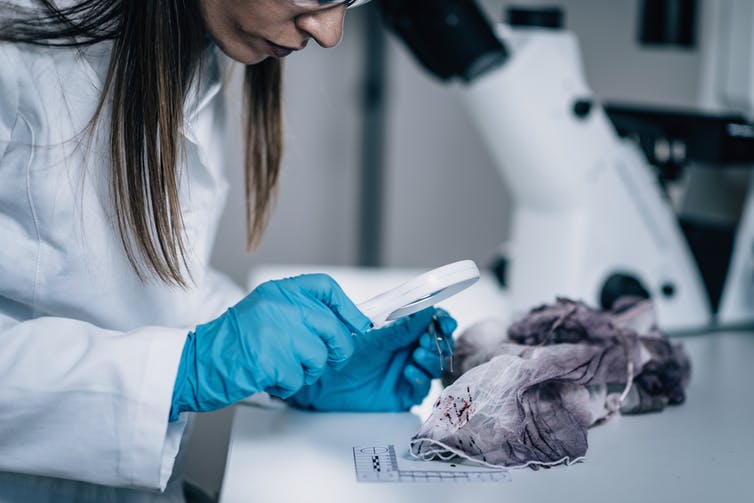An immunoassay is a biochemical test commonly used in medical and scientific laboratories to detect and measure the presence of a specific molecule or compound in a sample. This type of assay relies on the interaction between antibodies and the target molecule to provide valuable information about the substance being tested for. Here are some key points about immunoassays:
- Detection Method: Immunoassays are designed to detect and quantify the concentration of a particular substance, known as the analyte, within a sample. The analyte can be a wide range of molecules, including proteins, hormones, drugs, pathogens, or other biomolecules.
- Antibodies: Central to the immunoassay process are antibodies. Antibodies are proteins produced by the immune system that can specifically bind to antigens, which are the molecules or compounds of interest. In an immunoassay, antibodies are used to recognize and capture the target analyte.
- SpecificityIn the context of laboratory equipment or analytical techniques, the term "specific" describes the capability of a machine or method to accurately and selectively detect particular molecules or substances while minimizing interference from others. Specificity is a qualitative characteristic indicating the instrument's ability to target and identify specific compounds or analytes precisely. Here are key points about specificity: • Targeted Detection: Specificity focuses on the instrument's ability to target and detect particular molecules, compounds, or substances of interest accurately. It aims to minimize false-positive results by selectively identifying the desired analyte.
• Qualitative Characteristic: Specificity is typically described qualitatively, indicating the instrument's ability to differentiate between specific compounds, analytes, and other interfering substances.
• Analytical Instruments: Specificity is crucial in analytical chemistry and laboratory instrumentation. Instruments like mass spectrometers, chromatographs, and immunoassays may be described as specific if they can accurately identify and measure specific molecules or analytes.
• Applications: Specificity is essential in various scientific and clinical applications, such as pharmaceutical analysis, clinical diagnostics, environmental monitoring, and food safety testing. It ensures that only the intended target is detected without cross-reactivity with unrelated compounds.
• Cross-Reactivity: Cross-reactivity is a potential challenge in assay or instrument specificity. It occurs when the method inadvertently responds to compounds other than the target analyte. High specificity minimizes cross-reactivity.
• Specific Binding: In immunoassays and molecular biology techniques, specificity often relies on the specific binding of antibodies or probes to their target molecules. This binding ensures selective detection.
• Importance in Clinical Diagnostics: In clinical laboratory testing, high specificity is crucial to accurately diagnose diseases or conditions by detecting specific biomarkers or antigens associated with the condition.
• Specificity vs. Sensitivity: Specificity should not be confused with sensitivity. While specificity relates to the instrument's ability to target specific analytes accurately, sensitivity relates to its ability to detect very small amounts or concentrations of those analytes.
• Quality Control: Maintaining specificity is critical to quality control in laboratory testing. Laboratories must validate the specificity of their assays to ensure accurate and reliable results.
• Instrument Calibration: Specific instruments often require precise calibration and validation to confirm their ability to detect specific analytes. Calibration helps establish and maintain accuracy.
In summary, specificity refers to the ability of a machine or analytical technique to accurately and selectively detect particular molecules or substances of interest while minimizing interference from other compounds. It is vital in scientific research, clinical diagnostics, and analytical chemistry, ensuring that only the desired target analyte is identified with precision and accuracy. More: Immunoassays are highly specific because antibodies have an affinity for their target antigens. This specificity allows for accurate detection and measurement of the desired molecule in the presence of other substances. - Variants of Immunoassays: There are different variants of immunoassays, each with its own methodology. Common types include enzyme-linked immunosorbent assay (ELISA), radioimmunoassay (RIA), chemiluminescent immunoassay (CLIA), and fluorescence immunoassay. These methods vary in terms of sensitivity, precision, and the type of detection used.
- Steps in Immunoassays: The basic steps in an immunoassay typically involve the following:
- Capture: Antibodies that specifically bind to the target analyte are immobilized onto a solid support (e.g., a microplate or bead).
- Incubation: The sample containing the analyte is added to the solid support, allowing the analyte to bind to the immobilized antibodies.
- Washing: Unbound substances are washed away to remove any nonspecific interactions.
- Detection: A secondary antibody or reagent labeled with a detectable marker (e.g., enzyme, radioactive isotope, or fluorescent tag) is added. This marker produces a signal that is directly or indirectly proportional to the concentration of the analyte.
- Measurement: The signal is measured, and the analyte concentration is determined by comparing it to a standard curve generated using known analyte concentrations.
- Applications: Immunoassays have widespread applications in medical diagnostics, research, environmental monitoring, food safety testing, and drug development. They are used to detect various analytes, including hormones, infectious agents, cancer markers, and therapeutic drugs.
- Advantages: Immunoassays offer high sensitivity, specificity, and the ability to detect low concentrations of analytes. They are also well-suited for high-throughput analysis.
- Limitations: While highly specific, immunoassays may have limitations, such as the potential for cross-reactivity with similar molecules and the need for careful assay optimization.
In summary, immunoassays are necessary biochemical tests that rely on the specific binding of antibodies to target molecules. They are valuable tools for detecting and quantifying a wide range of substances in clinical, research, and industrial settings, providing crucial information for various applications in the life sciences.



